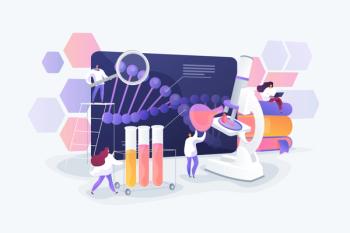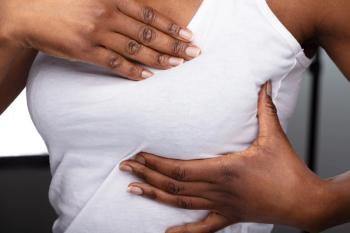
A novel computerized decision tool for aneuploidy screening
A decision aid for aneuploidy screening and testing could provide women with knowledge comparable to genetic counseling alone, according to new research.
A decision aid for aneuploidy screening and testing provides women with knowledge comparable to genetic counseling alone, according to a randomized controlled
Designed within a table-based application, the decision aid incorporated all aneuploidy screening and diagnostic testing options available at the time of the study and was developed with input from maternal-fetal medicine physicians, a geneticist and genetic counselors.
A total of 197 women in pregnancy week 22 or less and scheduled for genetic counseling were randomly allocated to a decision aid before genetic counseling (n = 92) or to genetic counseling alone (n = 105), between January and October 2017. Demographics and baseline knowledge were similar between the two groups, as was the proportion of women who had previously seen a genetic counselor. It took women an average of 21 minutes to complete the decision aid.
Mean knowledge scores were similar after exposure to the decision aid alone and after genetic counseling only: 10.4 vs. 10.6 on a 12-point scale (P = 0.929). The knowledge scores also were similar in comparisons of the decision aid plus genetic counseling versus only genetic counseling (10.9 vs. 10.6 [P = 0.306]) and the combination versus just the decision aid (10.9 vs. 10.4 [P = 0.541]).
In addition, the decisional conflict score after the decision aid alone was similar to the decisional conflict score following genetic counseling alone on a scale of 0 to 100: 1.6 vs. 1.7 (P = 0.369). However, decisional conflict was lower following completion of both the decision aid and genetic counseling, compared to genetic counseling only: 0.2 vs. 1.7 (P = 0.003).Decisional conflict for the combined modalities was also lower than for the decision aid alone: 0.2 vs. 1.6 (P = 0.003).
Overall, 67.5% of women in the combined modality group stated they would find it helpful to meet with a genetic counselor after completing the decision aid. Moreover, 88% in this group stated that they found genetic counseling helpful, in addition to the decision aid, after their counseling session.
The choice of test did not differ between the two groups, with very few women choosing diagnostic testing. Overall, 17.4% in the combined method changed their planned test after genetic counseling, with most changes between screening tests.
“While this may have occurred due to increased knowledge gained during counseling, causing women to change their mind after their chosen test, it is also possible that women also have difficulty identifying the name of tests they would prefer to choose,” wrote the study authors from the
After use of the decision aid, women in the combined modality group with less than a high school education answered on average 1.17 more questions correctly compared to 0.37 more questions correctly among women with greater than a high school education.
Due to known disparities in knowledge and prenatal counseling for low-income women or for those “whom English is not their primary language, decision aids have great potential for reaching these underserved groups in a standardized and accessible way,” the authors concluded.
Newsletter
Get the latest clinical updates, case studies, and expert commentary in obstetric and gynecologic care. Sign up now to stay informed.




